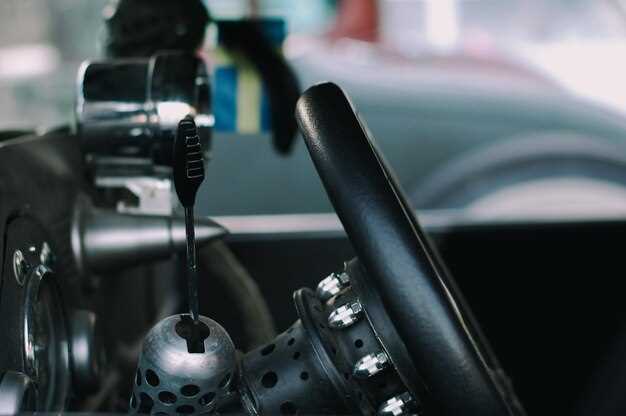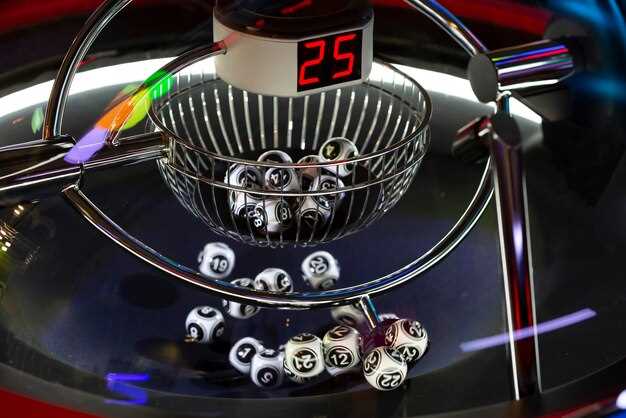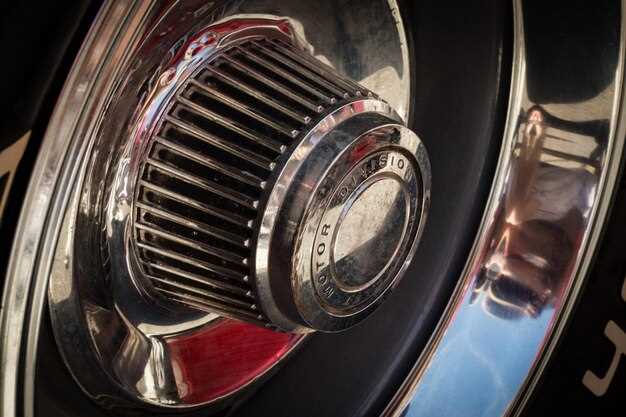
In the world of drag racing, the choice of transmission can significantly impact a vehicle’s performance on the strip. While many enthusiasts argue in favor of manual transmissions for their control and driver engagement, automatic transmissions have made significant strides in efficiency and speed. The right transmission can mean the difference between a podium finish and an early exit.
Modern automatic transmissions offer lightning-fast shifts and sophisticated control mechanisms, providing racers with unparalleled advantages in drag racing scenarios. These advancements have made them increasingly popular among competitors who seek to maximize their vehicle’s acceleration and overall performance. Understanding the key features that contribute to drag racing success is essential for selecting the best transmission setup.
Whether you’re a seasoned racer or a newcomer eager to grasp the nuances of drag racing, this guide will delve into the most effective automatic transmissions available today. We’ll explore their benefits, compare them to traditional manual options, and highlight the innovations that make them stand out on the track.
Top Automatic Transmissions Used in Drag Racing
Automatic transmissions have become integral to achieving peak performance in drag racing. They offer quick shifts, reduced driver fatigue, and the ability to handle substantial horsepower. Below is a table highlighting some of the best automatic transmissions favored by drag racing enthusiasts.
| Transmission Model | Key Features | Performance Advantages |
|---|---|---|
| Tremec T400 | High-torque capacity, lightweight design, versatile application | Swift shifts, enhanced durability under high power |
| TH400 (Turbo Hydro 400) | Three-speed, robust construction, commonly used in high-performance cars | Can withstand extreme power levels, minimal loss in power transfer |
| Powerglide | Two-speed, ultra-simple design, lightweight | Ideal for high horsepower setups, excellent for drag racing applications |
| Ford C4 | Three-speed, compact size, easy to modify | Responsive shifts, good for a variety of drag setups |
| GM 4L80E | Four-speed, electronically controlled, heavy-duty | Superior gear ratios, excellent for torque management |
Choosing the right transmission for drag racing depends on a variety of factors including the vehicle’s horsepower, weight, and intended race type. The automatic transmissions listed above are not only popular among racers but also proven to deliver exceptional results on the drag strip.
Comparing Drag Transmission Features and Benefits
When it comes to drag racing, choosing the right transmission is crucial for maximizing performance. The debate often centers around the advantages of automatic transmissions versus their manual counterparts. Understanding the distinct features and benefits of drag-specific automatic transmissions can provide clarity for enthusiasts and racers alike.
Efficiency and Consistency: One of the primary benefits of using an automatic transmission in drag racing is its ability to deliver power more efficiently. Automatic transmissions enable quicker shifts, reducing the time lost during gear changes. In contrast, manual gear shifting can introduce variability in performance due to the driver’s reaction time and skill level.
Torque Converter Advantages: Drag racing often involves launching vehicles at high RPMs. Automatic transmissions are equipped with torque converters, which allow for higher torque multiplication during the launch phase. This feature provides better initial acceleration, which is crucial for achieving optimal ET (elapsed time) at the drag strip.
Weight and Complexity: While automatics can be heavier due to additional components like torque converters and hydraulic systems, advancements in technology have led to the development of lightweight automatic drag transmissions. These offer less complexity compared to traditional manual setups, making them easier to tune and maintain, especially for competitive racers.
Shift Strategies and Control: Modern automatic transmissions often come with programmable shift strategies, allowing for tailored performance tuning. Racers can set parameters for shift points and firmness, enabling the transmission to shift at optimal times based on the vehicle’s power curve, further enhancing performance on the drag strip.
Driver Focus: With an automatic transmission, drivers can focus more on vehicle control and strategy during a race rather than managing gear shifts. This allows for a more simplified driving experience, enabling racers to concentrate on maximizing throttle response and racing lines, ultimately improving overall performance.
In conclusion, when it comes to drag racing, automatic transmissions present distinct advantages over manual setups. Their efficiency, adaptability, and user-friendly operation make them a popular choice among racers seeking to achieve the best times on the strip. Understanding these features helps in making an informed decision for ultimate drag performance.
Performance Metrics of Automatic vs Manual Transmissions
When it comes to drag racing, the choice between automatic and manual transmissions can significantly impact performance metrics. Each type of transmission has its advantages and disadvantages, which can affect acceleration times, consistency, and driver engagement.
Acceleration Times: Automatic transmissions are often preferred for drag racing due to their ability to shift gears faster than a human can. A well-tuned automatic transmission can deliver quicker acceleration times, as it optimally adjusts the shift points based on engine performance. In contrast, manual transmissions require the driver to shift gears, which can introduce delays, particularly under high stress and fast conditions.
Consistency: Automatic transmissions provide enhanced consistency in performance. The computer-controlled shifts ensure that each gear change is executed at the precise moment for maximum power delivery. Manual transmission drivers, however, might face variability in shifting performance, especially under pressure, which can lead to inconsistencies in quarter-mile times.
Driver Engagement: While automatic transmissions excel in performance metrics, many enthusiasts argue that manual transmissions offer a greater level of driver engagement. The tactile feedback and control that comes with shifting gears manually can enhance the racing experience. However, this engagement comes at the cost of performance, as the focus on shifting can detract from optimal throttle management during a drag run.
Weight and Design: Automatic transmissions often weigh more than their manual counterparts due to additional components like torque converters and complex control systems. This added weight can be a disadvantage in drag racing, where every ounce counts. Nonetheless, advancements in technology have led to lighter automatic designs that still provide competitive performance.
In summary, the choice between automatic and manual transmissions for drag racing performance depends on specific priorities. If ultimate acceleration and consistency are the goals, automatic transmissions tend to dominate in head-to-head comparisons. However, for those who prioritize driver connection and enjoy the art of driving, manual transmissions can still hold appeal despite their potential performance drawbacks.
Cost Analysis: Automatic vs Manual Transmissions for Racers
When considering the costs associated with drag racing, one of the key decisions a racer must make is whether to invest in an automatic or manual transmission. Both options have their own financial implications that can significantly impact a racer’s budget and performance. This analysis will outline the cost factors involved in choosing between these two types of transmissions.
Initial Purchase Cost
The initial purchase price of a transmission can vary widely. Here’s a breakdown:
- Manual Transmissions: Generally, manual gearboxes are less expensive than their automatic counterparts. Prices for entry-level manual transmissions can start as low as $1,000, while high-performance options may range around $2,500.
- Automatic Transmissions: Automatic transmissions tend to have a higher upfront cost, with basic models starting at approximately $1,500 and high-performance variants reaching upwards of $4,000 or more, especially if coupled with advanced technology for quicker shifts.
Installation Costs

Installation is another important cost consideration. Depending on the complexity, installation costs can differ:
- Manual Transmissions: While manual installations can be straightforward, they may require additional modifications to the vehicle, particularly for performance setups, leading to costs of around $500 to $1,200.
- Automatic Transmissions: The installation of automatic transmissions is usually more complicated due to the need for additional components such as torque converters. Installation expenses can range from $800 to $1,500.
Maintenance and Repair Costs
Long-term maintenance and repair costs also play a vital role in the overall expense:
- Manual Transmissions: Typically, manuals are simpler in design, leading to lower maintenance costs. Routine fluid changes and occasional clutch replacements are the primary expenses, averaging around $300 annually.
- Automatic Transmissions: Automatic systems require consistent fluid checks and more frequent services, with costs ranging from $400 to $800 yearly. Repairs can be costly, often exceeding $1,500 for major issues.
Performance Considerations
Performance impacts can also reflect cost savings over time:
- Manual Transmissions: While manual gearboxes may have a lower initial cost, they often require a skilled driver for optimal performance, potentially leading to consistency issues in drag races.
- Automatic Transmissions: The advantages of modern automatic transmissions, including faster shifting and enhanced power delivery, can lead to better performance on the track, justifying their higher costs for many racers.
Resale Value

Finally, the resale value should not be overlooked:
- Manual Transmissions: Manuals may maintain less value as they attract a niche market. Many buyers prefer automatics for ease of use.
- Automatic Transmissions: With the rising popularity of automatic systems, especially in drag racing, these transmissions tend to hold a better resale value, appealing to a larger audience.
In conclusion, the cost analysis of automatic versus manual transmissions for drag racing reveals that while the initial costs may differ significantly, ongoing maintenance, installation complexity, performance benefits, and resale value are crucial factors that can ultimately sway a racer’s decision. Understanding these dynamics will aid racers in making an informed choice that aligns with their budget and racing goals.
Maintenance Tips for Drag Racing Automatic Transmissions
Maintaining your auto transmission is crucial for optimal drag racing performance. Regular maintenance ensures that the transmission operates efficiently, reducing the risk of failure during critical races.
First, change the transmission fluid regularly. High-performance transmissions can put a strain on fluid, leading to degradation over time. Use a high-quality fluid designed for racing applications to guarantee better protection and performance. Check the manufacturer’s recommendations for the ideal fluid change interval.
Inspect and replace the transmission filter as necessary. A clean filter helps prevent debris from obstructing fluid flow, which is essential for maintaining optimal pressure and performance during intense racing situations. It’s advisable to perform this check in tandem with fluid changes.
Monitor transmission temperature closely. High temperatures can lead to severe damage. Installing a transmission cooler can help manage heat levels effectively. Ensure that the cooler is properly designed for drag racing to maximize its effectiveness in extreme conditions.
Check for leaks and inspect hoses and connectors regularly. Any loss of fluid can severely impact performance. Identifying and fixing leaks promptly is crucial to maintaining adequate fluid levels and pressure, ensuring that shifts remain crisp and responsive.
Pay attention to shift points and responsiveness during practice runs. If you notice slippage or delayed shifts, address these issues immediately. Adjusting the shift points can lead to significant improvements in performance, ensuring that your auto transmission delivers power efficiently.
Lastly, consider engaging a professional for occasional check-ups. A specialist can perform diagnostic tests and adjustments that might go unnoticed during routine maintenance. This proactive approach helps ensure that your transmission remains competitive on the drag strip.
Future Trends in Automatic Transmission Technology for Drag Racing
The landscape of automatic transmissions for drag racing is evolving rapidly, driven by advancements in technology and competitive pressures. One significant trend is the incorporation of sophisticated electronic controls. These systems allow for real-time adjustments to shift points, optimizing performance based on track conditions and vehicle dynamics. This adaptability gives automatic transmissions a significant edge over their manual counterparts, especially in the competitive drag racing environment.
Additionally, the integration of dual-clutch transmissions (DCT) is becoming more prevalent in drag racing applications. DCTs offer the benefits of lightning-fast gear changes, minimizing the time lost during shifts. This feature enhances acceleration and overall performance, making them an attractive option for racers looking to maximize their quarter-mile times. The continuous improvement in gear ratios also plays a critical role, allowing for better acceleration and higher top speeds.
Another emerging trend is the use of lightweight materials and innovative designs to reduce overall transmission weight without compromising strength. This focus on reducing weight is crucial in drag racing, where every millisecond counts. Manufacturers are exploring advanced composites and alloys to achieve this goal, pushing the envelope of current transmission designs.
Lastly, the hybridization of powertrains is influencing the future of automatic transmission technology. As electric and hybrid vehicles gain traction in motorsports, automatic transmissions will need to adapt to work seamlessly with electric motors. This evolution may lead to the development of new transmission architectures that can handle both traditional combustion engines and electric drive systems efficiently, providing racers with even more options in their performance setups.






